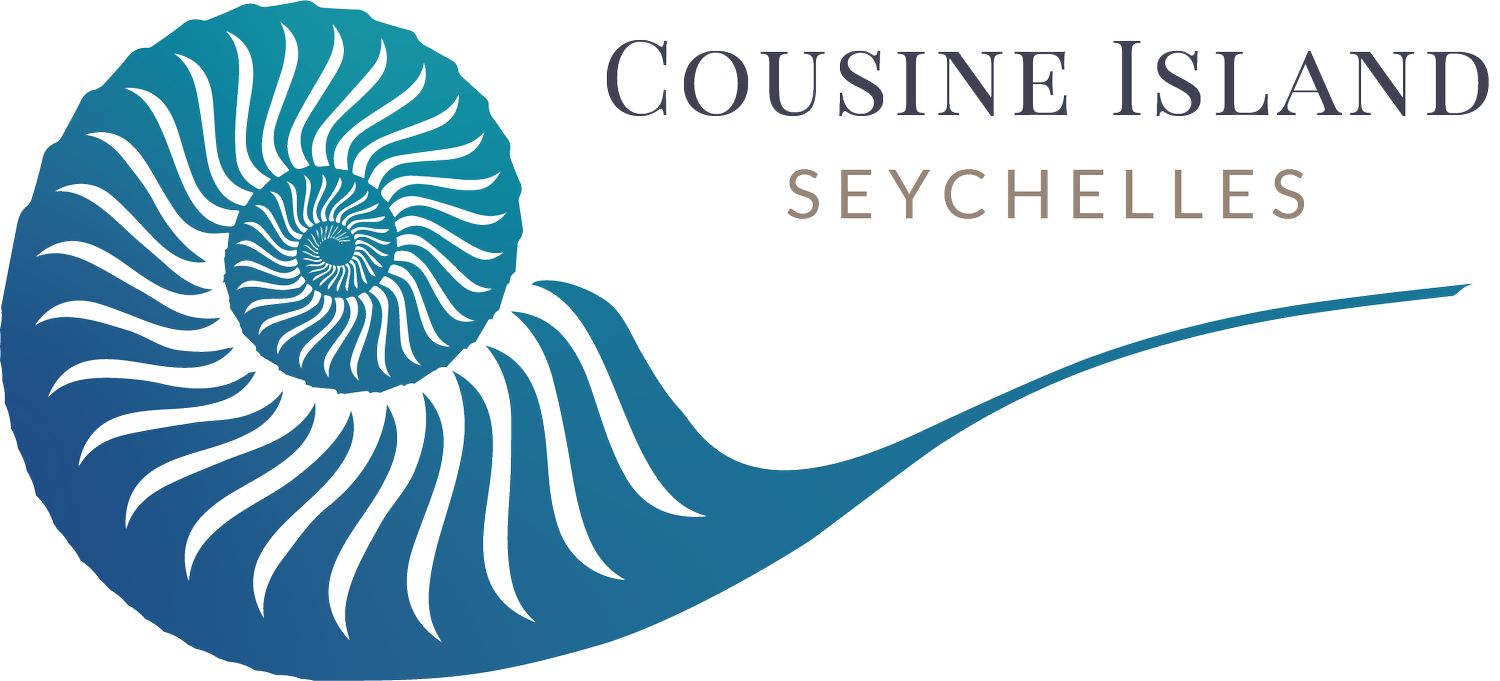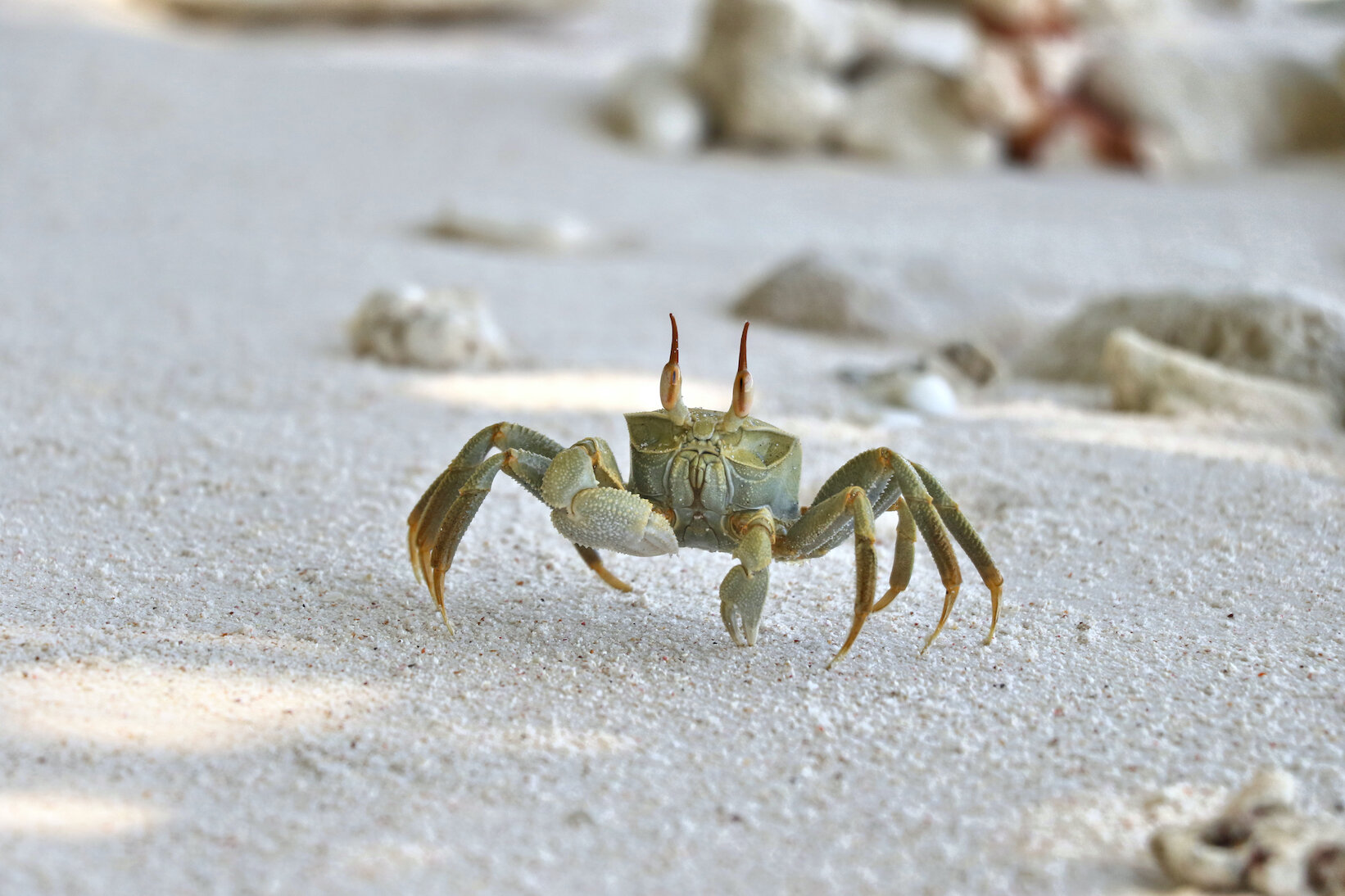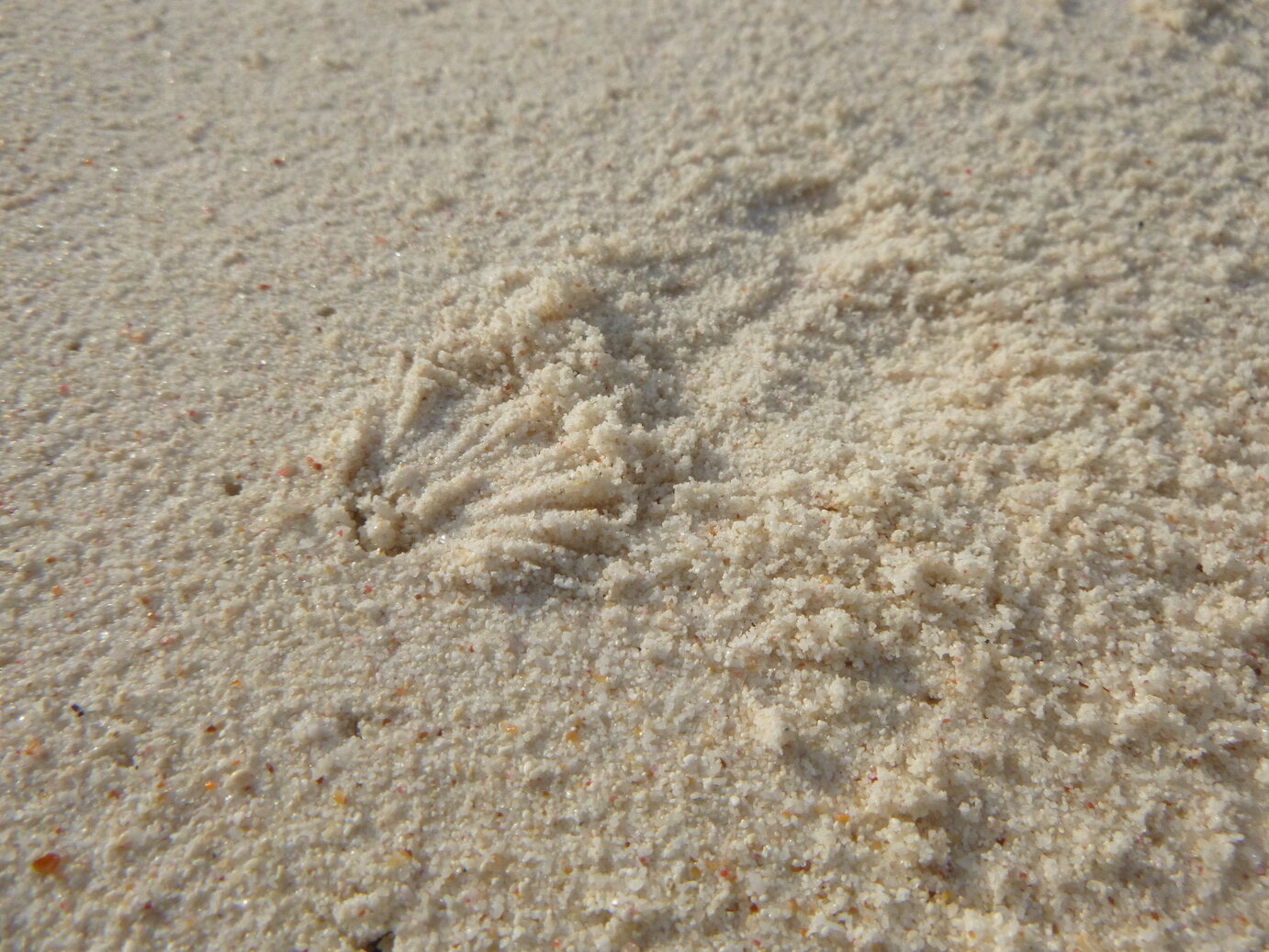The Enigmatic Ghost Crab: Keeper of Cousine Island’s Shores
Along the luminous white shores of Cousine Island, where the ocean washes the sand in a constant rhythm of renewal, a quiet and elusive resident scuttles between shadow and sunlight.
The ghost crab, known locally as Loulou, is one of the island’s most intriguing coastal inhabitants — a creature so perfectly attuned to its surroundings that it often seems to vanish before the eye can follow.
These animals are far more than fleeting glimpses on the shoreline. On Cousine Island, where wildlife thrives under a rare philosophy of protection and restoration, ghost crabs play a vital role in the delicate balance that defines this 26-hectare sanctuary. They exist at the intersection of beauty and necessity — a reminder that every species, no matter how small, contributes to the island’s larger story.
Each year, during the southeast Trade Winds season, the island transforms into a haven for seabirds returning to breed. Early July marks the beginning of Cousine’s annual seabird census, where the conservation team quietly observes the skies and shorelines. Recent counts have recorded over 80,000 breeding pairs — more than 160,000 individuals — gathering on this tiny island, a breathtaking testament to the success of Cousine’s decades-long conservation mission. In the midst of this abundance, the ghost crab becomes a key participant in a vibrant and self-sustaining ecosystem.
As natural beach custodians, ghost crabs maintain the shoreline in ways both subtle and essential.
Their presence is an indicator of ecological health: where ghost crabs thrive, the beach is clean, undisturbed, and functioning as nature intended. They dart across the sand at astonishing speeds, scavenging fallen fruit, plant material, decaying sea life, and even the occasional hatchling turtle. This opportunistic diet allows them to recycle nutrients back into the coastal system, ensuring the beach remains a living, breathing part of the island’s ecology.
Three distinct species of ghost crabs inhabit Cousine Island’s shores.
The horned ghost crab (Ocypode ceratophthalmus), with its small horn-like projections atop its eyes, is perhaps the most striking. These horns appear only once the crab reaches a certain size, giving adults a distinctive, almost mythical look. The chunky ghost crab (Ocypode cordimana), sturdier in appearance and lacking these eye-stalk horns, is another familiar scuttling shape along the sand. And on rare occasions, visitors may be fortunate enough to encounter the pink ghost crab (Ocypode eyderi) — a species first discovered on Cousine Island in 2002, marking a significant moment for Seychelles’ biological records.
Their behaviour, quietly unfolding along the beach, adds to the island’s sense of wonder. In the heat of the day, smaller ghost crabs often seal the entrance to their burrows with tiny patterns of sand — delicate formations crafted with their pincers to shield themselves from the sun. Larger crabs take a different approach, dragging seaweed and bits of marine debris to the entrance of their homes to create a cool and sheltered refuge beneath the surface. Every movement, every instinct, reflects a deep and ancient understanding of their environment.
These crabs, both elusive and essential, represent the magic of a place like Cousine Island — where nature operates freely, unburdened by human interference. Here, the shoreline becomes a theatre of subtle motion: seabirds wheeling overhead, waves carving through satin-white sand, and ghost crabs vanishing into their burrows with the swiftness of a heartbeat.
To witness a ghost crab on Cousine Island is to witness the success of an ecosystem protected with intention.
The island’s conservation-first ethos — the same commitment that brings back tens of thousands of seabirds each year and restores native flora from ridge to reef — ensures that species like the ghost crab continue to thrive as they have for centuries.
For guests who wander along the island’s shoreline, the presence of these enigmatic creatures enhances the sense of exclusivity and serenity that defines the Cousine experience. Their quicksilver movements across the sand are a silent reminder of the island’s promise: that every inch of this coastline tells a story, that every creature plays a part, and that true luxury lies in preserving the fragile harmony of nature.
On Cousine Island, nothing exists in isolation. The ghost crab stands as one more thread in a tapestry of life that stretches from the forested heart of the island to the shimmering edge of the sea — a testament to the power of conservation, and to the quiet, enduring beauty that thrives when nature is allowed to be truly wild.
These crabs, both elusive and essential, represent the magic of a place like Cousine Island — where nature operates freely, unburdened by human interference. Here, the shoreline becomes a theatre of subtle motion: seabirds wheeling overhead, waves carving through satin-white sand, and ghost crabs vanishing into their burrows with the swiftness of a heartbeat.







